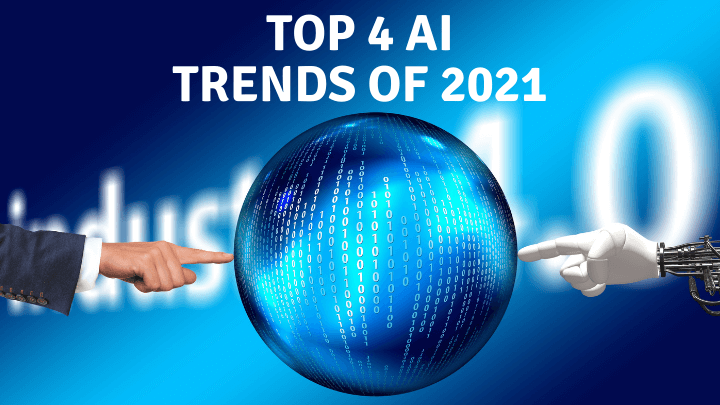
By definition, Artificial Intelligence refers to the technology behind the ability of machines or computers to perform various tasks that usually require human intelligence. AI systems can understand their environment and adapt behaviors by evaluating the impact of certain actions. Check out the top things you should know about artificial intelligence (AI).
Basically, AI technologies possess human-like capabilities such as learning, planning, and reasoning.
Impact of Artificial Intelligence (AI) in everyday life:
Artificial Intelligence is just one of the multitudes of technological advancements that continues to transform our world. With its ability to automate and amplify the work we can do, it frees us from those laborious and repetitive tasks. This then opens up an opportunity for individuals to do tasks that requires empathy, creativity, and authentic human engagement. In a human workforce, this could result in a boost in job satisfaction and happiness.
Furthermore, AI has also made its way to homes. Today, families and individuals can get AI-ready houses, capable of smart home technology features. From security systems, heating, and cooling systems, to door locks, everything can be controlled through smartphones or smart home assistants such as Google Home, Amazon Alexa, and Apple Siri.
Advanced AI technology is also currently being used in various industries in the world. Here’s the list of the top industries benefiting from AI innovations:
Education:
Primarily uses AI to automate instructors’ tasks and offer technological resources for students. There’s an AI-powered scheduling system that provides parent-teacher conferencing and robotic assistants or tutors for further student learning and interactions.
Retail:
This industry mainly uses AI automation to streamline operations, from sales forecasting, storing data, to performing inventory. There are now natural language processing and chatbots, and predictive analytics to help with customer engagement.
Medicine and healthcare:
AI-powered bots are now widely used to help in various surgeries, primarily to lower risks of infection and ensure higher accuracy. Many electronic health record technicians are now also utilizing AI to automate medical records.
Human resources and recruitment:
In any kind of business, recruitment has been one of the time-consuming work. Through artificial intelligence, human resources professionals can now use AI algorithms for blind hiring and candidate suggestions.
Lending and loan:
AI tech now allows large lenders to minimize delays and overhead, as well as automate and streamline the entire mortgage loan process. AI is also useful in determining borrowers’ creditworthiness and offering better customer support.
Top 4 AI trends to watch out for this year 2021:
As more and more industries are investing in AI tech, plenty of innovations continue to rise year after year. Here are some of them:
1. Improved cybersecurity and AIOps:
AIOps means Artificial Intelligence for IT operations.
This year, AI will be more widely used in preventive cybersecurity, from learning to spot frauds to identifying patterns of unauthorized activities. Moreover, AI-based software is also known for being proactive in identifying vulnerabilities in IT infrastructures.
And through its innovations, AI is expected to fuel further improvements in resolving IT problems with the use of AIOps (artificial intelligence for IT operations) platforms. As it features purely automated and data-driven responses, data and noise and human error are less likely to occur.
2. Combination with IoT:
The confluence of the Internet of Things (IoT) and artificial intelligence has become more seamless, primarily due to AI’s capability of actionable insights and prevalence of sensors. In particular, smart home systems can now take actions on data they monitor, from switching off lights, locking doors, and even reducing in-home air temperatures.
You can now even see AIoT refrigerators that can scan their contents and recommend recipes based on that. The combination of IoT and AI has offered other impressive benefits including better greater sustainability practices and a higher level of security.
3. Hyper automation:
Apart from the confluence with IoT, AI can also be combined with robotic process automation, referred to as hyper-automation. This concept provides organizations and businesses with the flexibility to automate repetitive tasks and complex business processes. Some of the tools utilized to achieve hyper-automation include Intelligent Process Discovery, Analytics and Insights, Robotic Process Automation, and Intelligent Document Processing.
With the proper combination of these tools, users will be able to augment and automate processes with ease. Other advantages of hyper-automation include advanced analytics, accurate insights, improved team collaboration, as well as greater productivity and compliance.
4. No-code AI:
Many individuals find AI tech to be complex. Luckily, organizations around the globe are investing more in making the data science process accessible to everyone. With democratization and no-code AI, operational and management teams can have access to advanced analytical capabilities without the need for specialized skills.
The rise of these no-code platforms has provided non-technical people to easily conceptualize and built workflows making AI accessible to all.
These are just a few trends in artificial intelligence and there are certainly a lot more. As AI continues to evolve quickly, it’s evident that many of us are encouraged to adopt these new forms of technology to make our lives easier in so many ways.
